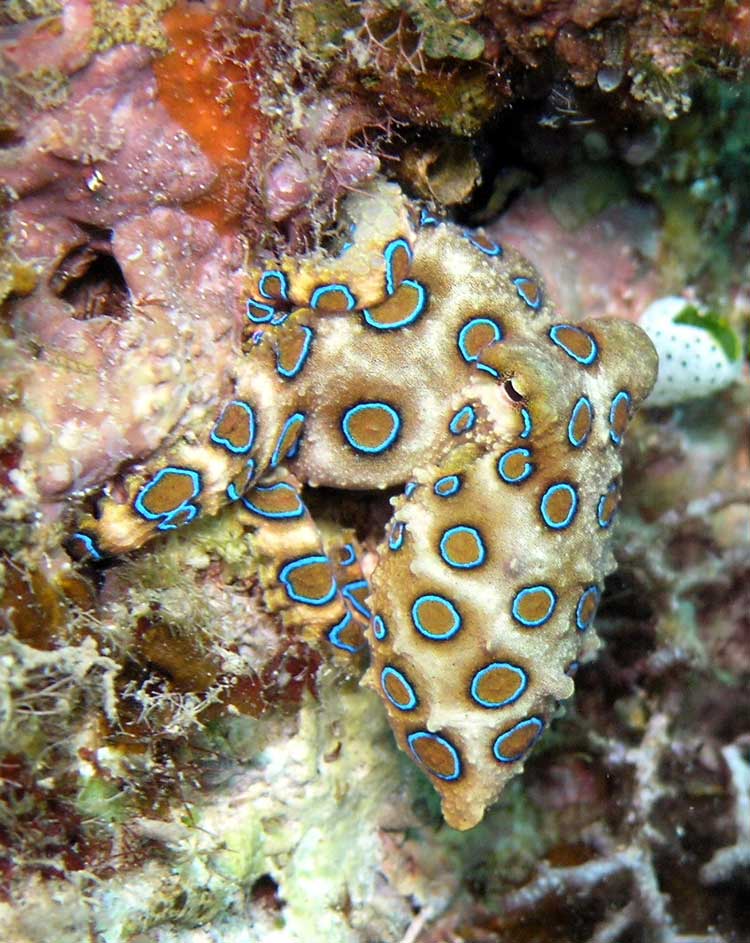Hapalochlaena lunulata (*) Cladus: Eukaryota Name Hapalochlaena lunulata (Quoy & Gaimard, 1832) Vernacular names Reference * ITIS The Greater Blue-ringed Octopus (Hapalochlaena lunulata) is one of three (or perhaps four) species of blue-ringed octopuses. Unlike its southern brethren, the Blue-lined and Southern Blue-ringed octopuses that are found only in Australian waters, the range of the Greater Blue-ringed Octopus spans the tropical western Pacific Ocean. Greater Blue-ringed Octopuses can weigh between 10 and 100 grams. Prey The Greater Blue-ringed Octopus eats mostly crustaceans such as crabs and shrimp. Also, it eats reef fish that stray too close by. It injects them with a powerful neurotoxin that easily paralyzes them, which allows the octopus to devour its prey. Toxicity Their venom (a poisonous saliva), which includes a neurotoxin known as tetrodotoxin, is produced by bacteria in the salivary glands. Tetrodotoxin blocks sodium channels, causing motor paralysis and respiratory arrest within minutes of exposure, leading to cardiac arrest due to a lack of oxygen.[1][2] References 1. ^ Robert Steven Hoffman et al.. Goldfrank's Manual of Toxicologic Emergencies. McGraw-Hill Professional. p. 917. ISBN 007144310X. Source: Wikipedia, Wikispecies: All text is available under the terms of the GNU Free Documentation License |
|

